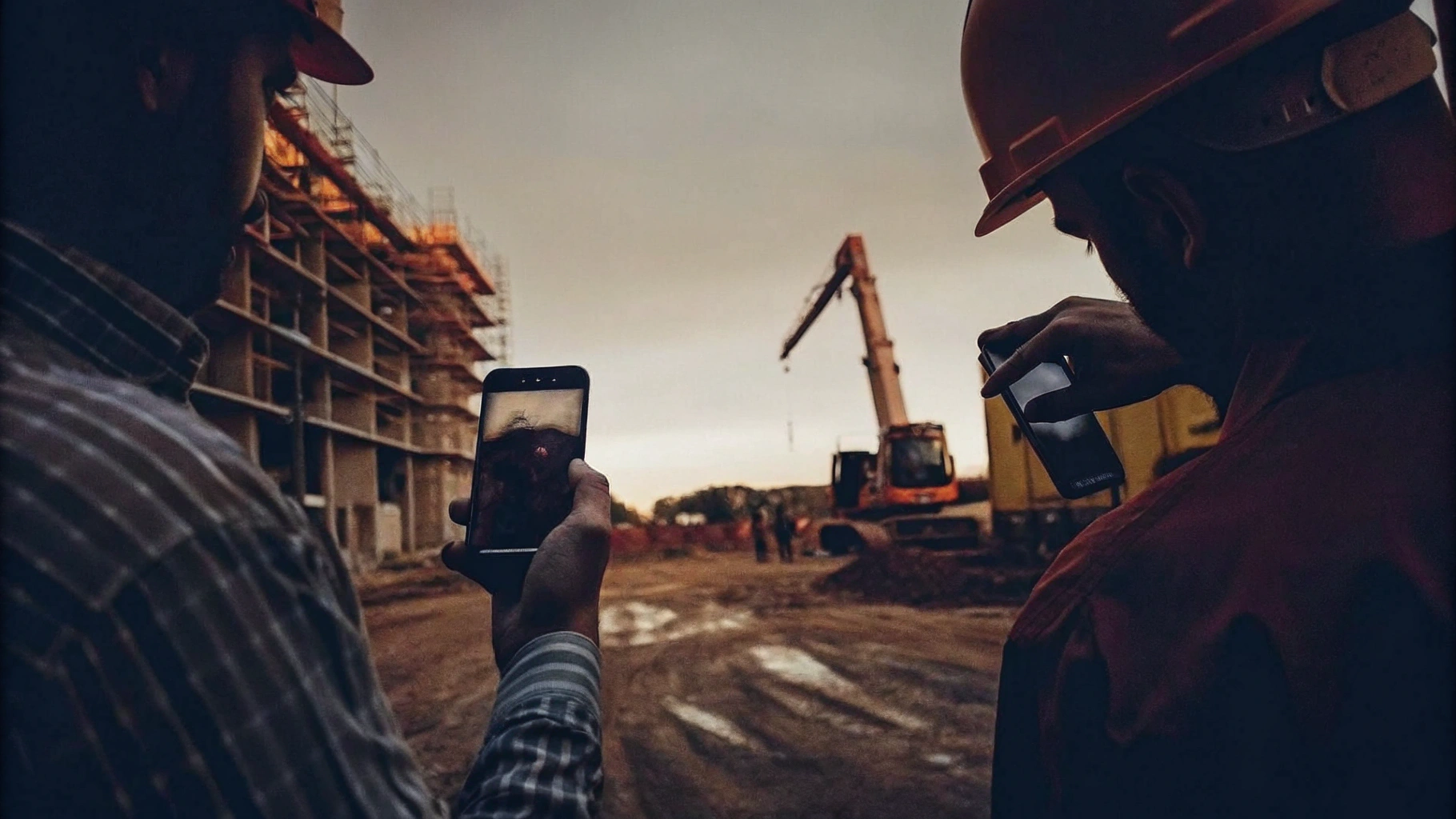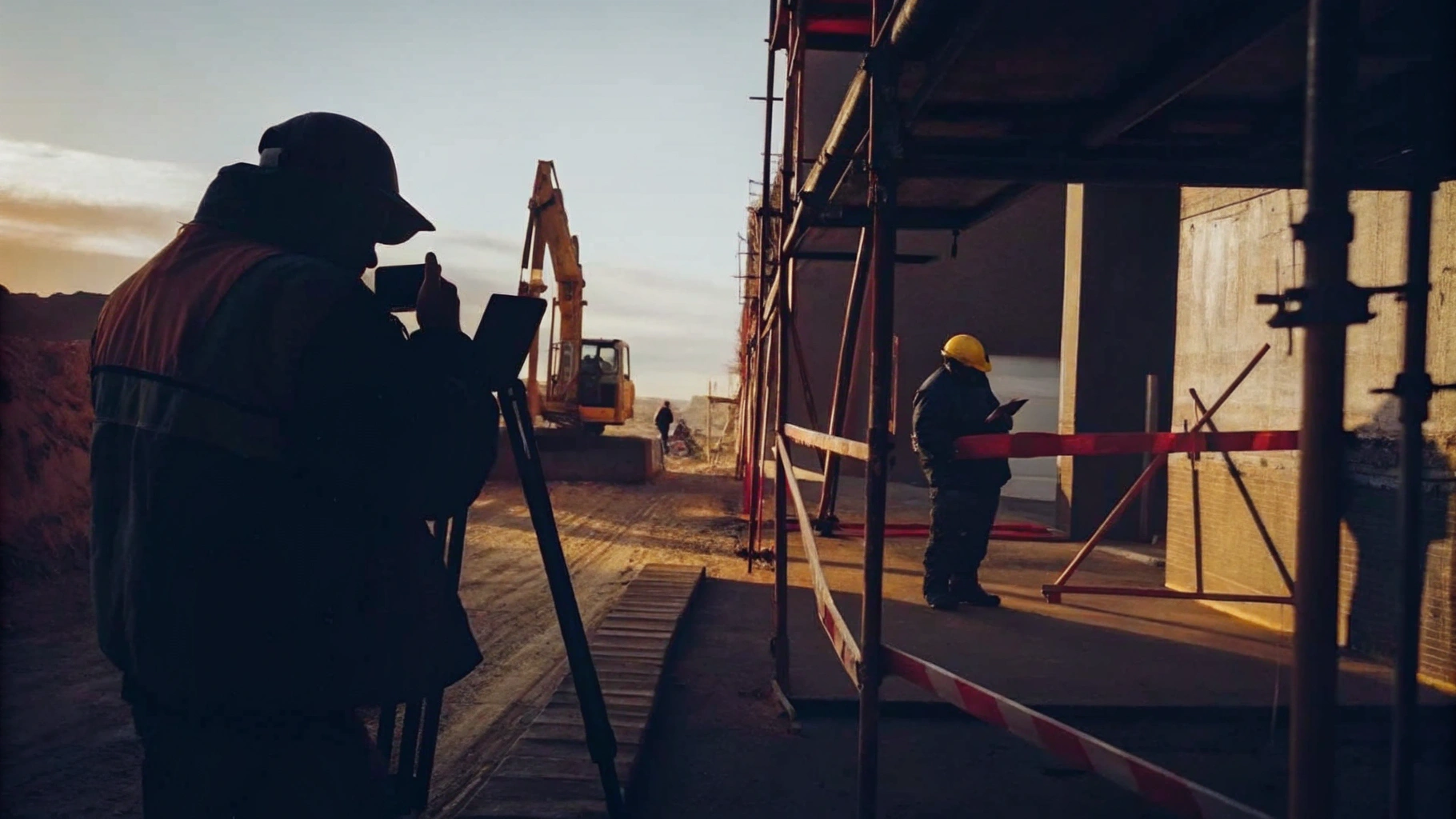
4 Best Practices for Effective Mobile Security Solutions in Construction

Overview
The article highlights four best practises for effective mobile security solutions in the construction industry:
- Device security
- Data protection
- Network security
- User awareness
These are critical components in mitigating risks such as theft, data breaches, and human error. This comprehensive framework is essential for safeguarding sensitive information and ensuring operational continuity on construction sites.
The reality is that ignoring these practises can lead to significant consequences, including financial losses and reputational damage. For businesses in the construction sector, the implications of inadequate security measures are profound, as they not only jeopardise sensitive data but also disrupt project timelines and overall productivity.
In practise, adopting these best practises is not merely a defensive strategy; it is a proactive approach to business resilience. By prioritising mobile security, construction companies can protect their assets and maintain a competitive edge in a challenging environment.
The lesson is clear: investing in robust mobile security solutions today is a safeguard against greater losses in the future. By understanding the importance of these practises, businesses can ensure they are well-equipped to face the evolving security landscape.
Introduction
In an industry where time equates to financial loss and sensitive information is perpetually in transit, the construction sector encounters distinct mobile security challenges that threaten both operational efficiency and data integrity. The increasing reliance on mobile devices at job sites necessitates that construction firms adopt robust security measures. These measures must not only guard against theft and data breaches but also enhance overall operational effectiveness.
How can construction companies effectively navigate the complexities of mobile security while ensuring their teams remain productive and well-informed? This article explores best practises for safeguarding mobile devices in construction, equipping professionals with essential knowledge to address these urgent security concerns decisively.
Understand Mobile Security Fundamentals
Protecting portable technology is essential for , networks, and confidential information against unauthorised access, loss, or damage. In the construction industry, an effective mobile security strategy encompasses several key components:
- Device Security: Mobile devices used on-site must be equipped with strong passwords, encryption, and up-to-date security software. Unprotected devices can serve as entry points for cyber threats, leading to significant operational disruptions.
- Data Protection: It is critical to implement robust measures to protect sensitive information stored on portable devices—such as project plans, financial records, and client data. Employing mobile device management (MDM) solutions can facilitate the enforcement of encryption and secure access controls, ensuring that only authorised personnel can access vital information.
- Network Security: Establishing secure Wi-Fi connexions and utilising Virtual Private Networks (VPNs) is crucial for protecting data transmitted over the internet. This approach mitigates risks associated with public Wi-Fi, which can expose devices to man-in-the-middle attacks.
- User Awareness: Educating staff to recognise phishing attempts and other cyber threats is vital for maintaining device safety. Regular training sessions empower personnel to identify unusual behaviours and adopt best practises for device usage, significantly reducing the likelihood of security breaches.
By focusing on these fundamental elements, construction teams can develop mobile security solutions that effectively mitigate risks associated with mobile device usage, thereby ensuring the integrity and continuity of their operations.

Identify Unique Security Challenges in Construction
Construction sites encounter a variety of unique security challenges that necessitate tailored mobile security solutions for effective risk mitigation. The reality is that theft and vandalism pose significant threats. High-value equipment and materials, often left unattended, highlight the need for mobile security solutions to protect construction sites from theft. In fact, the UK building sector suffers losses exceeding £1 billion annually due to stolen equipment, with only 21% of these items being reclaimed. This stark statistic highlights the urgent need for robust theft prevention measures.
Data breaches represent another critical concern for mobile security solutions. The risk is heightened in the building industry, especially with portable devices that can be lost or stolen, highlighting the need for effective mobile security solutions. Such incidents can compromise sensitive project information, leading to considerable operational and reputational damage. Ignoring this risk could result in severe consequences for businesses.
Moreover, insufficient training among workers exacerbates vulnerabilities in mobile security solutions. Many may lack adequate training in mobile security solutions, which increases the likelihood of human error. This knowledge gap can leave construction sites exposed to both physical and digital threats, underscoring the importance of comprehensive training programmes in mobile security solutions.
Dynamic environments further complicate protective measures. The evolving nature of construction projects introduces new risks that require ongoing evaluation and adjustment of security strategies. As projects progress, it is essential to adapt and refine protective measures to address emerging threats effectively.
By acknowledging these challenges, building companies can develop portable protection solutions that specifically address the risks inherent in their operations. This proactive approach not only enhances site safety but also improves operational efficiency, demonstrating that is a vital component of long-term business resilience.
Implement Best Practices for Mobile Security Solutions
To enhance mobile security on construction sites, consider the following best practices:
- Establishing a Mobile Device Management (MDM) policy is crucial for managing and securing mobile devices used on-site. An effective mobile security solution encompasses features such as remote wiping abilities and protective settings, which are essential for safeguarding sensitive information. Mobile security solutions not only enhance productivity but also ensure like GDPR.
- Conducting regular safeguarding audits is essential for identifying vulnerabilities and ensuring compliance with established policies. Statistics indicate that organizations performing regular audits can decrease incidents by up to 30%, underscoring their efficiency in maintaining robust protective measures. Furthermore, MDM can assist in monitoring equipment inventory and optimizing usage, thereby enhancing safety.
- Continuous education on mobile safety best practices is vital. Employees should be trained to identify phishing attempts, protect devices, and understand the importance of adhering to safety protocols. James Summers emphasizes that clear communication and training are pivotal in overcoming employee resistance to MDM, fostering a culture of awareness within the organization.
- Encouraging the use of strong authentication methods, such as multi-factor authentication (MFA), significantly enhances security. MFA provides an additional layer of protection, making unauthorized access more difficult.
- Encrypting sensitive data stored on portable units is vital for protecting it from unauthorized access. Encryption ensures data integrity and confidentiality, particularly in the event of device loss or theft.
By adopting these best practices, building companies can substantially reduce the risk of portable safety incidents, thereby ensuring a safer working environment through effective mobile security solutions. For instance, a UK-based building firm that transitioned to Microsoft Intune experienced improved visibility and control over portable assets, demonstrating the effectiveness of these practices in real-world applications.

Leverage Technology for Enhanced Mobile Security
To improve mobile protection in building projects, leveraging is essential. The reality is that security challenges are often underestimated in the construction sector. Here are key strategies to consider:
- Mobile Security Software: Implement security applications that facilitate real-time monitoring, threat detection, and data encryption, ensuring that sensitive information remains protected.
- AI-Powered Surveillance: Utilise AI-driven surveillance systems capable of monitoring construction sites and detecting unusual behaviour. These systems provide real-time alerts, significantly improving response times and reducing the likelihood of incidents. In practise, organisations that have adopted AI surveillance report a marked decrease in theft and vandalism, showcasing its effectiveness in improving site protection.
- Secure Communication Tools: Employ encrypted messaging applications for secure communication among team members. This reduces the risk of data interception and ensures that sensitive information is shared safely.
- Cloud-Based Solutions: Utilise cloud storage options with strong protective features, enabling safe access to project data from portable platforms. This flexibility is crucial for on-site teams needing immediate access to information.
- Regular Software Updates: Ensure that all mobile devices and applications are regularly updated to protect against known vulnerabilities. Keeping software up to date is essential for preserving integrity.
That said, incorporating Hostile Vehicle Mitigation (HVM) measures is crucial for comprehensive site security. HVM includes establishing physical barriers and design strategies to stop vehicles from serving as weapons, thereby improving the safety of building sites. By embracing these technologies and integrating HVM, construction firms can establish mobile security solutions that create a more secure environment for both personnel and sensitive information, ultimately enhancing overall site safety and operational efficiency. Furthermore, Priority First emphasises adaptability and discretion in its approach, tailoring security solutions to meet the unique risks and expectations of each client. The lesson is clear: early investment in security technologies prevents greater losses later.

Conclusion
Effective mobile security solutions are essential for protecting construction sites from various threats. Prioritising mobile security enables construction firms to safeguard sensitive data, valuable equipment, and the safety of their personnel. A comprehensive strategy that includes device security, data protection, network security, and user awareness is crucial for fostering a resilient operational environment.
The reality is that key practises such as establishing a Mobile Device Management (MDM) policy, conducting regular audits, and providing continuous education underscore the significance of a proactive approach to mobile security. Additionally, leveraging advanced technologies like AI-powered surveillance and secure communication tools can considerably enhance site protection. The construction industry faces unique challenges; however, with the right measures in place, companies can mitigate risks and improve overall operational efficiency.
That said, investing in mobile security not only shields against immediate threats but also cultivates long-term business resilience. As the construction landscape evolves, staying ahead of emerging risks through best practises and innovative technologies is vital. By embracing these strategies, construction firms can secure their operations, protect sensitive information, and lay the groundwork for a safer, more efficient future in the industry.
Frequently Asked Questions
Why is mobile security important in the construction industry?
Mobile security is essential for safeguarding handheld gadgets, networks, and confidential information against unauthorised access, loss, or damage, which can lead to significant operational disruptions.
What are the key components of an effective mobile security strategy?
An effective mobile security strategy includes device security, data protection, network security, and user awareness.
How can device security be ensured for mobile devices used on-site?
Device security can be ensured by equipping mobile devices with strong passwords, encryption, and up-to-date security software.
What measures should be taken to protect sensitive information on mobile devices?
Robust measures such as employing mobile device management (MDM) solutions can enforce encryption and secure access controls, ensuring that only authorised personnel can access vital information.
What is the significance of network security in mobile security strategies?
Network security is crucial for protecting data transmitted over the internet by establishing secure Wi-Fi connexions and utilising Virtual Private Networks (VPNs) to mitigate risks associated with public Wi-Fi.
How can user awareness contribute to mobile security?
Educating staff to recognise phishing attempts and other cyber threats through regular training sessions empowers personnel to identify unusual behaviours and adopt best practises for device usage, significantly reducing the likelihood of security breaches.




